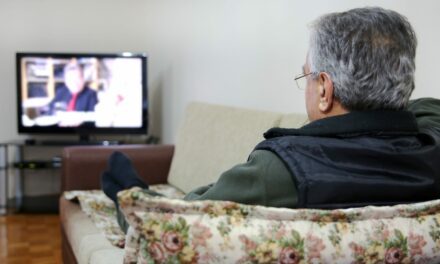12-29-2006
By studying a gene earlier linked to deafness in humans, researchers now have new insight into the molecular process by which components of the inner ear send messages to the brain. The team reports its findings in the October 20, 2006, issue of the journal Cell, published by Cell Press.
The researchers found that mice lacking the gene otoferlin are profoundly deaf. The animals’ deafness results from an inability to translate sound stimulation into the release of a chemical nerve messenger, or neurotransmitter, that would usually pass that information to auditory nerves and on to the brain, they reported. The sensory structures within the mutant animals’ ears otherwise appeared to develop normally.
“Study of the genes responsible for deafness can bring new insight into the molecular basis of how hearing works,” said Christine Petit of the Institut Pasteur in Paris.
The sensory machinery within the inner ear is particularly intriguing, she added, “in the sense that it operates with extreme temporal precision.”
In mammals, the hearing organ, or cochlea, is a snail-shaped structure of the inner ear that is filled with a watery fluid. When that liquid moves in response to sound vibrations, thousands of sensory “hair” cells are set into motion.
Those sensory receptors come in two types: inner and outer hair cells. Outer hair cells amplify sound within the cochlea, allowing for hearing sensitivity. In contrast, inner hair cells are “the genuine sensory cells transmitting information on the temporal structure and intensity of sound to the central nervous system,” Petit said.
While outer hair cell defects can lead to considerable hearing loss, she added, a loss of inner hair cell function results in total deafness as messages cannot get through.
Inner hair cells operate in a manner comparable to neurons, she said. When an inner hair cell is stimulated, channels open up allowing calcium to flow in. In turn, that influx of calcium leads small “sacs” full of neurotransmitter to fuse with the cell membrane, releasing their contents into the space, or synapse, between the sensory cells and auditory nerve endings.
That chemical release allows nerve messages to be passed from one neuron to another. In inner hair cells, those neurotransmitter-filled vesicles are held in place at the cell membrane by tethers known as “ribbons.”
The current study follows up a report by Petit’s team several years ago that people with a recessive form of deafness harbor two abnormal copies of the otoferlin gene. They also had some evidence hinting that the gene might act as a calcium sensor with an important role in neurotransmitter release by the inner hair cells. For example, otoferlin resembles a calcium-sensing protein involved in release of chemicals by sensory neurons elsewhere in the body. Their current study provides additional evidence to confirm that notion.
They now report that otoferlin activity in the cochlea occurs only in the inner hair cells, where it concentrates in the ribbon-associated synaptic vesicles. They also found that the otoferlin protein binds calcium and interacts with other proteins known to play a role in neurotransmitter release.
To further examine the gene’s role in a living animal, the researchers studied “knockout” mice completely lacking a functional otoferlin gene. When exposed to sounds of various frequencies, the mice showed no detectable activity in parts of the brain that normally process sound.
They further found that the profoundly deaf mice suffered a complete loss of neurotransmitter release from their inner hair cells, despite having an apparently normal “ribbon synapse” and calcium flow.
The findings led the researchers to conclude that, “otoferlin is essential for a late step of [neurotransmitter release] and may act as the major [calcium] sensor triggering membrane fusion at the inner hair cell ribbon synapse.”
The findings also have therapeutic implications, as they suggest that people who are deaf as a result of defects in otoferlin “will benefit from cochlear implants,” the researchers said. Cochlear implants analyze sound messages and convert them into electrical signals, bypassing the cochlea to directly stimulate the auditory nerves.
“That’s good news,” Petit said, since otoferlin-linked deafness is an auditory neuropathy, a class of hearing impairment for which the best course of treatment had remained uncertain.
[SOURCE: Medical News Today, October 2006]




